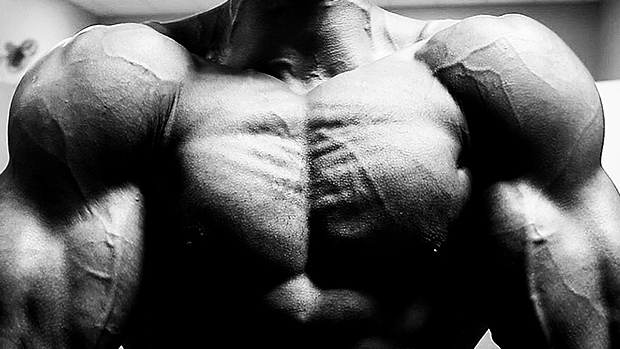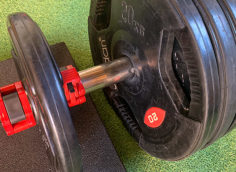Barbells and dumbbells are awesome for chest work, but so are suspension devices (gymnastic rings, TRX, Blast Straps etc.) Unfortunately, the people most willing to use them are the ones that don't have a clue as to how to use them effectively.
Lots of gimmicky training programs have turned serious lifters away from suspension devices. Too bad, because using these tools for chest has a lot of benefits:
- The free-hanging straps and free-moving handles allow the wrists to orient comfortably and the arms to track in a preferred pattern.
- Since your back isn't pinned against a bench, your shoulder blades are able to move freely.
- Because of these first two points, many lifters who experience shoulder pain are able to train pain free. (The device reinforces proper scapulohumeral rhythm.)
- Bracing and stabilizing the entire body is crucial.
- The intensity can be infinitely adjusted by making slight adjustments to body positioning, the length or position of the straps, or by adding weight to your body.
Setting the straps far apart – outside of shoulder width – will add difficulty to any chest movement you do. The straps will constantly add resistance by attempting to return to their starting hanging position. Therefore, transverse adduction of the shoulder is the main movement pattern challenged. It'll require a strong pec contraction to pull against the straps and bring the hands all the way to the mid line of the body.
1. Chest Squeeze at Mid Line
This looks easy, but it's not if you're contracting the pecs hard. Assume a push-up position and bring the handles directly underneath you by squeezing the chest. Hold this position with the pecs fully contracted. Make sure to fully protract the scapulae by keeping your torso pushed up as high as possible.
2. Wide Push-Up, Finishing at Mid Line
This may look like a simple push-up, but remember that the straps are attempting to pull your arms away from your body. This makes completing each rep more difficult.
3. Wide Flye, Finishing at Mid Line
The straps are still pulling the same way as in a wide push-up, but when doing a flye, the triceps disengage. This requires the pecs to work much harder.
4. Wide Push-Up, Finishing Outside of Mid Line
Another way to challenge the chest is to not fully complete the range of motion. This keeps a high amount of tension on the pecs and it makes the movement less stable. When the hands are brought all the way together, the straps also pull all the way up against the arms, providing stability. Keeping the hands away from the mid-line keeps the straps off the arms, requiring the shoulder joint to keep stable on its own.
5. Wide Flye, Finishing Outside of Mid-Line
To really target the pecs with a high amount of tension and not much stability, use this variation.
6. Wide Negative Flye to Push-Up
A good way to progress toward the flye is by doing it on the eccentric or lowering portion only, and then doing a (less intense) push-up on the concentric portion.
7. Wide Negative Push-Up to Flye
This is harder to do than just a flye alone. Re-positioning the joint angles of the arm to go from a push-up into a flye (at the hardest position of the movement) requires a lot of strength and connective tissue health.





